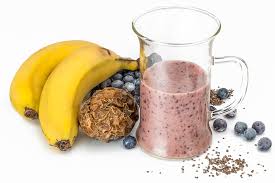
Share this post!
It seems to be all the rage…..everyone, especially in Podcast land, is talking about it. I’ve personally heard Beyonce, Jennifer Lopez, Terry Crews, and Hugh Jackman sings its praise…..and speak of renewed health and vitality.
What dietary ‘sweetheart’ is everyone talking about?
Intermittent Fasting
This is an umbrella term for ways of eating that restricts calorie consumption to only occur during a certain window of time and fasting the rest of the time. Time-Restricted Eating (TRE) is the most common form of intermittent fasting, but there are three other alternative ways to fast as well.
Time-Restricted Eating:
This is the most popular form of intermittent fasting where you eat only within a select, shortened timeframe during the day. The fasting length is typically beyond the normal 8 to 12-hours of an overnight fast (i.e. during sleep).
- One of those most common examples of TRE is the 16:8 fast, where you fast for 16 hours and eat only during an eight-hour window, such as between 10 a.m. and 6 p.m.
- Although the window hours may vary, most people who follow this diet plan tend to stick to the same schedule every day.
READ MORE >> The Bedtime Snack: Yea or Nay?
The 5:2 diet:
On this fast, you eat as you ‘normally’ do, five days per week.
- On the other two days, you restrict your calories to 500 or fewer per day.
- You may have recently heard Jimmy Fallon speak highly of this type of fasting – a style of eating that seems to work well for him.
Eat, Stop, Eat:
Here you fast for a full 24 hours once or twice a week.
- It’s like the 5:2 fast but stricter.
- Not eating anything for 24 hours can be difficult for most people. However, like the 5:2 fast, you can eat whatever you want on the other days of the week.
Alternate-Day Fasting:
Here you fast one day, whether by not eating at all, or eating 500 calories or less.
- You will eat ‘normally’ the next day, then repeat.
- Because you are fasting more frequently than you are on 5:2 or on Eat, Stop, Eat, it may be a hard method of eating to maintain.
Important Note
One of the key aspects to successful ‘fasting’ that might not be mentioned in mainstream media is the importance of a 3-hour fasting window before bedtime. Regardless of the fasting approach that resonates with you, it is important to make sure that you allow your body adequate time to digest the food consumed before going to bed.
If 10 p.m. is your normal bedtime, it will be crucial to stop eating all food by 7 p.m. in order for the intermittent fasting to be successful.
Though I, personally, would probably not take nutrition advice from the stars mentioned above, it’s worth a look to see if any of these fasting protocols can improve long-term health.
As it turns out, all of these fasting programs can be helpful IF you do the fasting correctly….and that’s a BIG if.
Eating ‘Normally’
Most of the information found in magazines on these fasting programs suggest that you eat like you ‘normally’ eat during the feeding phase of the program. Well, what if your ‘normal’ diet is processed and packaged foods?
You will absolutely lose weight by restricting the amount of hours during which you eat in a day, but will you be improving your health? Ummmmmm……..not likely on a processed food diet.
So, if you choose to add intermittent fasting to your health routine, should the foods you eat be high fat/low carb? Should they be a high protein/low carb? What about a 40/30/30 plan where you’re eating 40% carbs, 30% protein, and 30% fat?
The good news is that any of the above will work, as long as you’re choosing good quality fuel….meaning healthy whole foods instead of processed packaged foods.
Eating foods high in nutrients is the only way to have long-term health improvement.
When I want cutting-edge information in the world of nutrition, besides talking to my colleagues at Nutrition Therapy Institute, my go-to resources are Dr. Rhonda Patrick, Dr. Satchin Panda, Dr. Jason Fung, and Dr. Chris Masterjohn.
These doctors all have podcasts that are loaded with the science behind why various forms of intermittent fasting is beneficial for certain health conditions.
Sooooo…….what actually happens to your body if you decide to participate in intermittent fasting?
Circadian Rhythm:
One of the key features is the regulation of your circadian rhythm, which is quite important because every cell in the body follows a circadian rhythm. This rhythm governs when a cell is most metabolically active, when hormones are produced and when repair processes are activated.
The science is pretty strong that if you eat during daytime hours and fast during the evening hours, it helps with circadian rhythm entrainment, which enables your cells to get back to their normal rhythm and hormones regain their normal secretion cycles and repair and rejuvenation can also take place.
Unfortunately, if you don’t stop eating approximately 3 hours before bedtime, the circadian rhythms are thrown off and the cells can’t perform optimally.
Type 2 Diabetes:
Circadian entrainment is especially important for people with type 2 diabetes. A dysfunctional circadian rhythm makes it virtually impossible to get insulin levels under control, leading to impaired blood sugar regulation.
When intermittent fasting is correctly done, the benefits to the diabetic patient are life-changing.
And, because incidence of diabetes and obesity continue to sky-rocket in the western world, utilizing strategies to rebalance the body can be quite helpful.
If you, or a loved one, is struggling with type 2 diabetes and/or obesity, (or any other chronic health challenge) I would strongly encourage you to reach out to someone Board Certified in Holistic Nutrition (like many of the graduates of Nutrition Therapy Institute) to get the guidance needed to choose the type of intermittent fasting that would work best for you.
One of my favorite ways to break a fast is with a simple protein shake.
It’s so easy to make and loaded with nutrients to support optimal blood sugar regulation.
Easy Protein Shake:

1 serving protein powder (I use plain organic whey protein, but you can use other plain organic protein powders)
½ frozen banana
1 palmful frozen blueberries
1 palmful raw coconut flakes
¼ tsp matcha powder
¼ tsp cinnamon
10-12 ounces liquid of choice (I use nut milk, but raw cow’s milk or water works, too)
Pulse in blender until smooth.
About the author: Dr Becky Spacke, teaches holistic nutrition courses at Nutrition Therapy Institute. In addition, she has a private practice, working with people at risk of developing Alzheimer’s Disease.
About Nutrition Therapy Institute’s Holistic Nutrition Certification
Nutrition Therapy Institute (NTI) is a leader in holistic nutrition education. Since 1999, NTI has provided students with the highest quality in nutrition training by offering comprehensive holistic nutrition courses online and in-person to help students achieve thriving careers as holistic nutrition therapists in the field of holistic nutrition counseling and wellness. Interested in starting our holistic nutrition courses and earning your holistic nutrition certification? Attend an informational webinar to learn more by signing up HERE.
Images: istock.com/JuliaMikhaylova; Image by stevepb is free for use by Pixabay
Share this post!




















